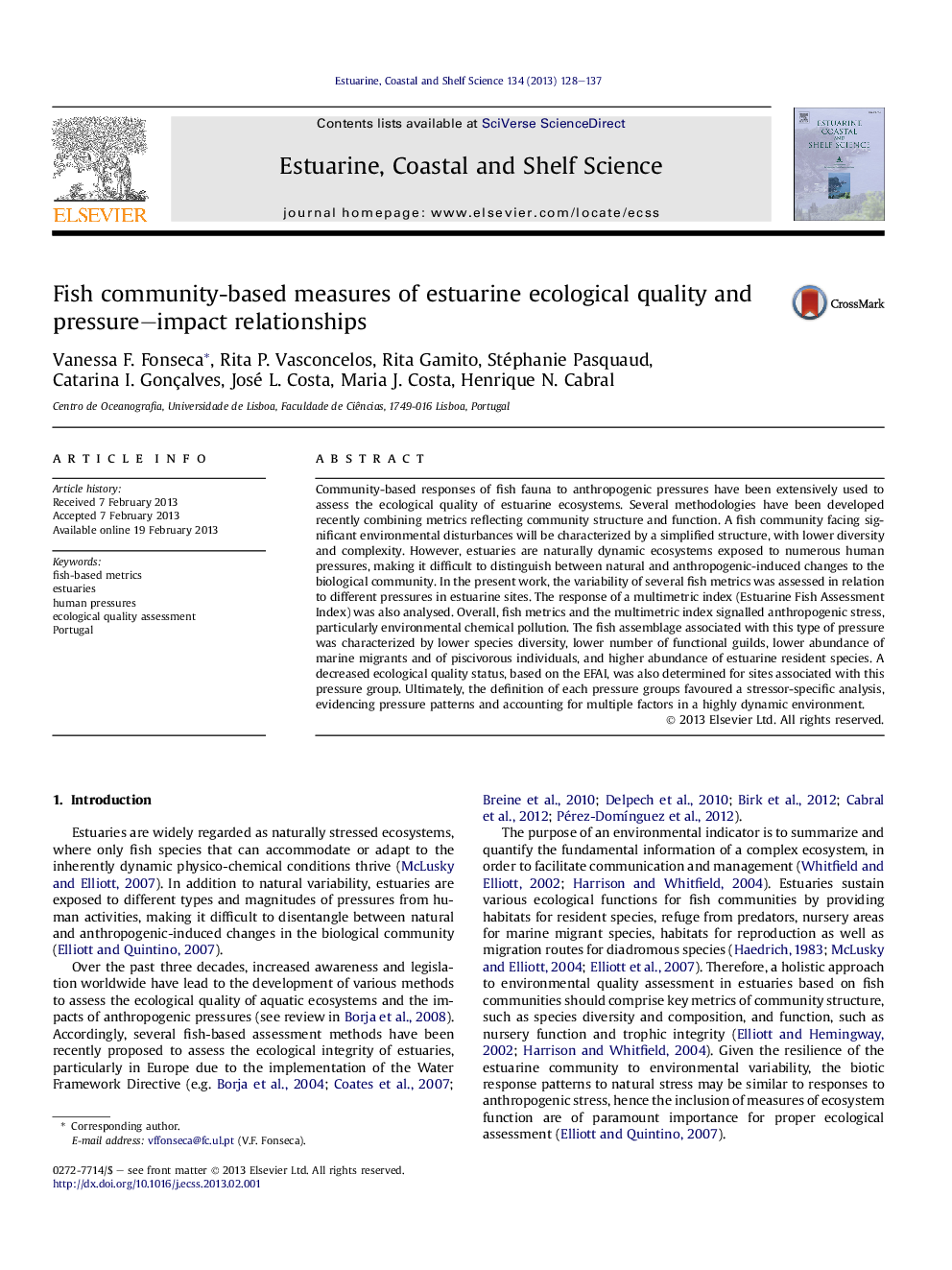| Article ID | Journal | Published Year | Pages | File Type |
|---|---|---|---|---|
| 4539742 | Estuarine, Coastal and Shelf Science | 2013 | 10 Pages |
Community-based responses of fish fauna to anthropogenic pressures have been extensively used to assess the ecological quality of estuarine ecosystems. Several methodologies have been developed recently combining metrics reflecting community structure and function. A fish community facing significant environmental disturbances will be characterized by a simplified structure, with lower diversity and complexity. However, estuaries are naturally dynamic ecosystems exposed to numerous human pressures, making it difficult to distinguish between natural and anthropogenic-induced changes to the biological community. In the present work, the variability of several fish metrics was assessed in relation to different pressures in estuarine sites. The response of a multimetric index (Estuarine Fish Assessment Index) was also analysed. Overall, fish metrics and the multimetric index signalled anthropogenic stress, particularly environmental chemical pollution. The fish assemblage associated with this type of pressure was characterized by lower species diversity, lower number of functional guilds, lower abundance of marine migrants and of piscivorous individuals, and higher abundance of estuarine resident species. A decreased ecological quality status, based on the EFAI, was also determined for sites associated with this pressure group. Ultimately, the definition of each pressure groups favoured a stressor-specific analysis, evidencing pressure patterns and accounting for multiple factors in a highly dynamic environment.
